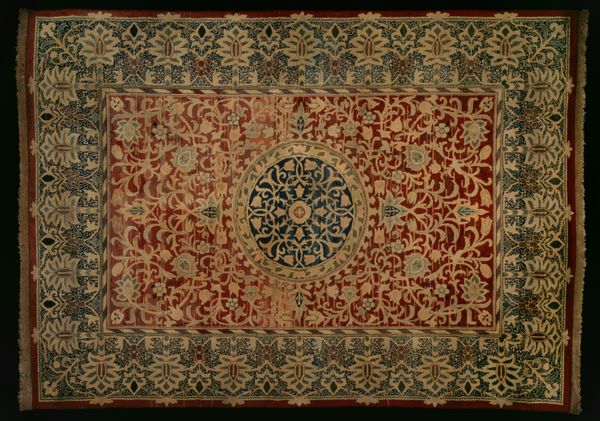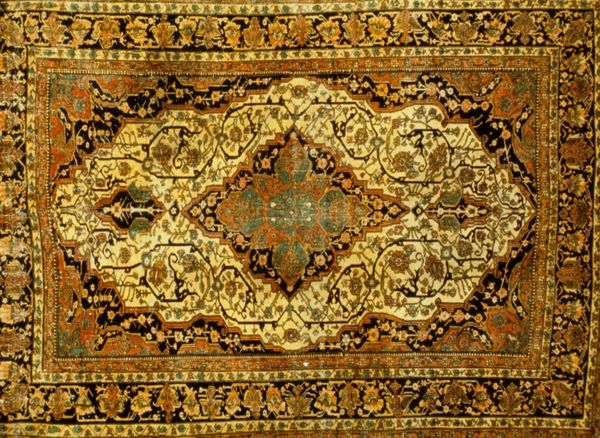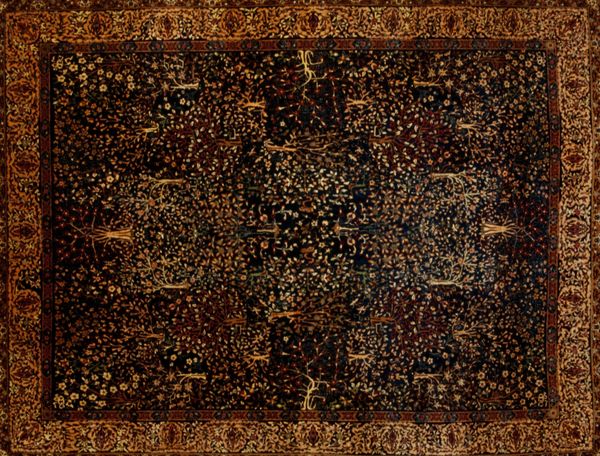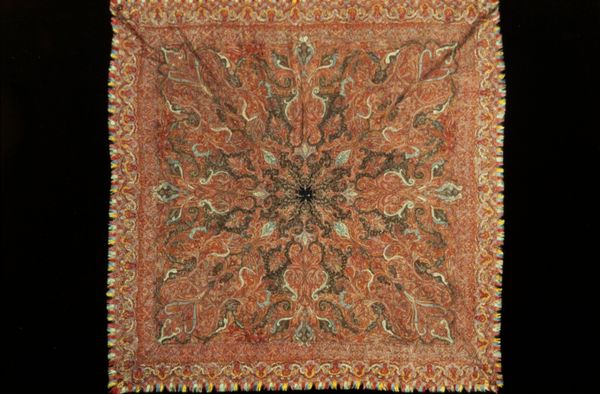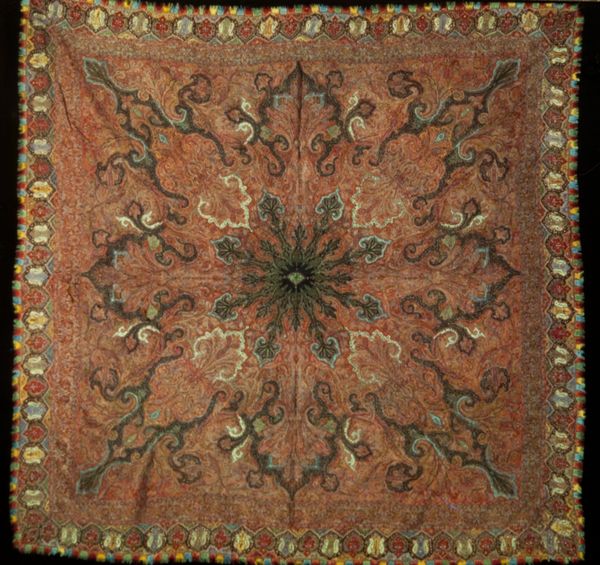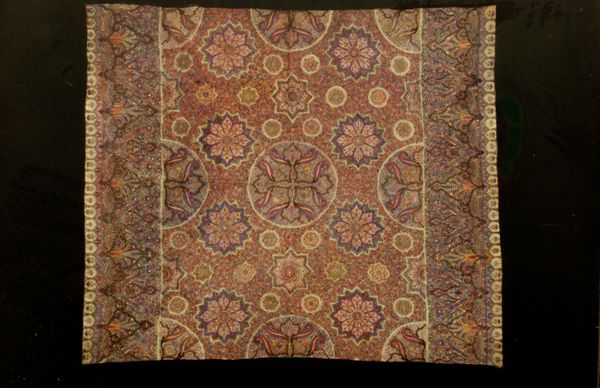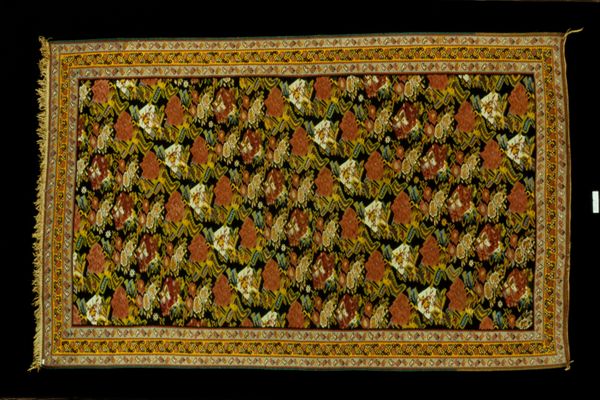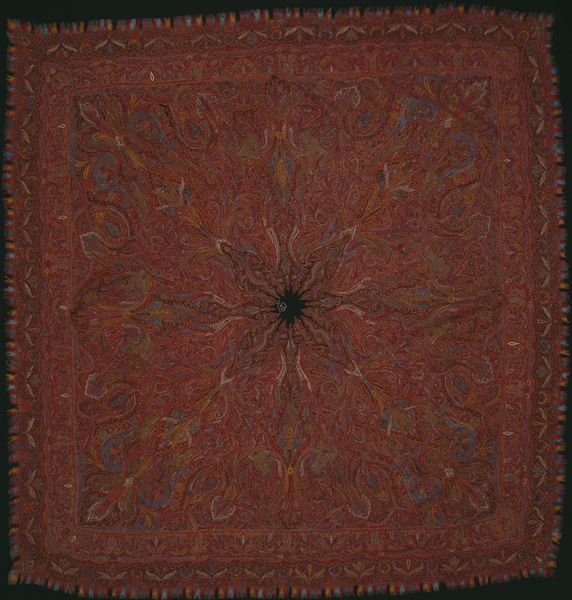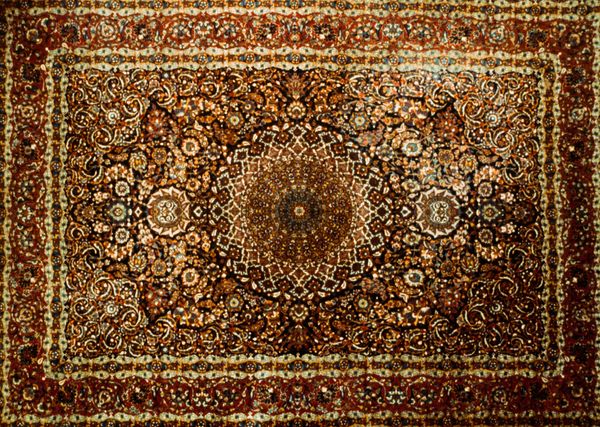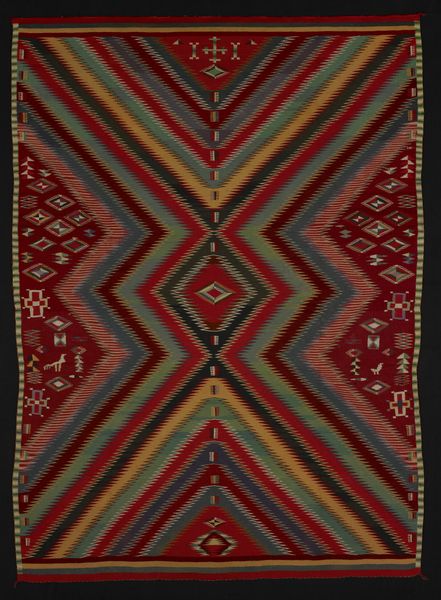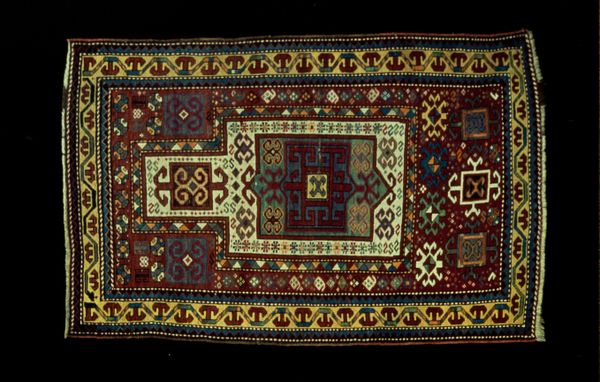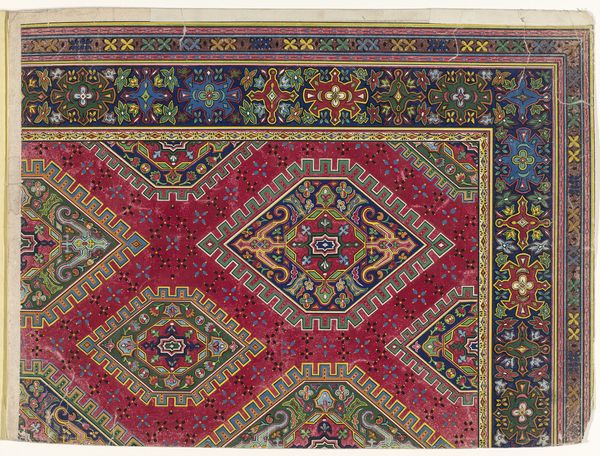
weaving, textile, wool
#
natural stone pattern
#
pattern
#
weaving
#
textile
#
wool
#
geometric pattern
#
abstract pattern
#
repetitive shape and pattern
#
geometric
#
orientalism
#
repetition of pattern
#
intricate pattern
#
pattern repetition
#
layered pattern
#
repetitive pattern
Dimensions: 21 x 20 in. (53.34 x 50.8 cm)
Copyright: Public Domain
Curator: What strikes you first about this woven textile? It’s an anonymous piece, titled simply "Pillow Cover," dating back to the 19th century. It’s currently held in the collection of the Minneapolis Institute of Art. Editor: It's remarkably intricate. I'm drawn to the richness of the earth-toned color palette, yet also perceive a latent violence in the meticulous repetition of its geometric shapes. Curator: Violence? That’s unexpected. Elaborate? Editor: These intricate patterns suggest an attempt to control chaos, to confine an unpredictable world within rigid structures. The question is: control for whom, and at whose expense? Curator: I see your point. There’s certainly a sense of imposed order. Structurally, the layered patterns exhibit a rigorous formal discipline. Note the nested squares creating a strong sense of internal symmetry. Editor: Exactly, the formalism here reflects the social dynamics that produced it. Who designed this? Who wove it? Was this "pillow cover" intended for everyday use or display? Was it purely decorative, or did it serve symbolic functions linked to cultural or religious beliefs? Curator: Those details are, unfortunately, lost to time. Though the categorization of it under the label "Orientalism" hints at how Western perceptions may have shaped its interpretation and reception. Editor: Precisely. The piece invites us to critically examine how cultural artifacts get exoticized. It requires of us a consciousness to think critically about these artistic traditions outside of Western narratives and market demands that frequently divorce them from lived experience. Curator: I concede your points regarding violence might be a bit extreme, but your challenge to consider its social and cultural context undeniably expands our comprehension beyond mere aesthetics. It’s certainly far more than just a textile woven with geometric motifs. Editor: It reminds us of the urgent responsibility art institutions have to be more ethical in their curation, preservation, and overall handling of non-Western works. Curator: Indeed, looking closely at the color, structure and repeating shapes shows it’s more than initially meets the eye, and looking beyond these elements is critical for a rich and thorough encounter. Editor: Absolutely, it challenges us to consider who benefits from our interpretations.
Comments
No comments
Be the first to comment and join the conversation on the ultimate creative platform.
